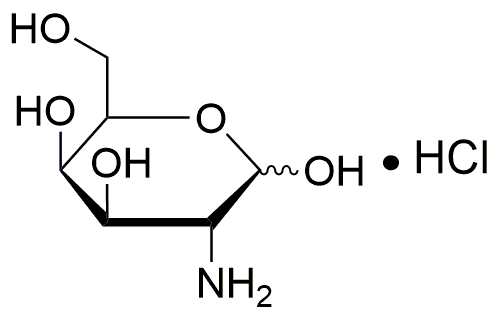D-(+)-Galactosamine hydrochloride is widely utilized in research focused on:
- Biomedical Research: This compound is essential in studying glycoprotein synthesis and metabolism, aiding researchers in understanding cellular processes and disease mechanisms.
- Drug Development: It serves as a valuable tool in the development of therapeutics for liver diseases and cancer, where it can help in designing targeted drug delivery systems.
- Cell Culture: Used in cell culture media, it supports the growth of various cell lines, providing researchers with a reliable environment for experiments.
- Immunology: This chemical is important in the study of immune responses, particularly in the development of vaccines and immune-modulating therapies.
- Biotechnology: It plays a role in the production of recombinant proteins and enzymes, enhancing efficiency in biotechnological applications.
General Information
Properties
Safety and Regulations
Applications
D-(+)-Galactosamine hydrochloride is widely utilized in research focused on:
- Biomedical Research: This compound is essential in studying glycoprotein synthesis and metabolism, aiding researchers in understanding cellular processes and disease mechanisms.
- Drug Development: It serves as a valuable tool in the development of therapeutics for liver diseases and cancer, where it can help in designing targeted drug delivery systems.
- Cell Culture: Used in cell culture media, it supports the growth of various cell lines, providing researchers with a reliable environment for experiments.
- Immunology: This chemical is important in the study of immune responses, particularly in the development of vaccines and immune-modulating therapies.
- Biotechnology: It plays a role in the production of recombinant proteins and enzymes, enhancing efficiency in biotechnological applications.
Documents
Safety Data Sheets (SDS)
The SDS provides comprehensive safety information on handling, storage, and disposal of the product.
Product Specification (PS)
The PS provides a comprehensive breakdown of the product’s properties, including chemical composition, physical state, purity, and storage requirements. It also details acceptable quality ranges and the product's intended applications.
Certificates of Analysis (COA)
Search for Certificates of Analysis (COA) by entering the products Lot Number. Lot and Batch Numbers can be found on a product’s label following the words ‘Lot’ or ‘Batch’.
*Catalog Number
*Lot Number
Certificates Of Origin (COO)
This COO confirms the country where the product was manufactured, and also details the materials and components used in it and whether it is derived from natural, synthetic, or other specific sources. This certificate may be required for customs, trade, and regulatory compliance.
*Catalog Number
*Lot Number
Safety Data Sheets (SDS)
The SDS provides comprehensive safety information on handling, storage, and disposal of the product.
DownloadProduct Specification (PS)
The PS provides a comprehensive breakdown of the product’s properties, including chemical composition, physical state, purity, and storage requirements. It also details acceptable quality ranges and the product's intended applications.
DownloadCertificates of Analysis (COA)
Search for Certificates of Analysis (COA) by entering the products Lot Number. Lot and Batch Numbers can be found on a product’s label following the words ‘Lot’ or ‘Batch’.
*Catalog Number
*Lot Number
Certificates Of Origin (COO)
This COO confirms the country where the product was manufactured, and also details the materials and components used in it and whether it is derived from natural, synthetic, or other specific sources. This certificate may be required for customs, trade, and regulatory compliance.


